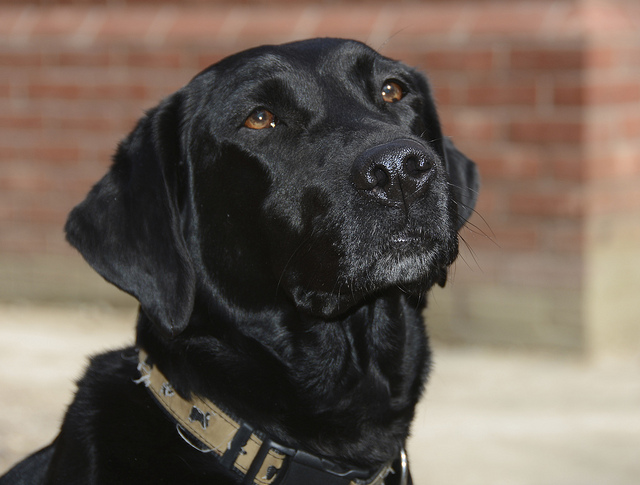Labrador Trained to Sniff Out Devastating Honey Bee Disease
February 11, 2019
Bee Colony Collapse, Honey Bees
According to assistant professor Michelle Nappier with the Virginia-Maryland College of Veterinary Medicine, dogs “have up to 300 million olfactory receptors in their noses, versus only about six million for us. The part of their brains dedicated to interpreting smell is about 40 times larger than ours.” For this reason, dogs are perfect for inspecting honey bee colonies for American foulbrood (AFB), which is one of the worst bacterial diseases impacting honey bees today. The result of a bacterium called Paenibacillus larvae, this disease poses a serious threat to honey bees and the agricultural systems relying on them.
AFB specifically affects bee larvae, with crop protection agent Rob Snyder saying, “Once spores are in the midgut, the vegetative form of the bacterium takes over using the larvae as a source of nourishment.” One larvae can contain a billion spores, and only 35 are required to trigger AFB. When hives become infected, beekeepers usually treat them using antibiotics like lincomycin hydrochloride and tylosin tartrate. However, though they help control symptoms, these antibiotics don't destroy the spores. “When you treat a beehive with antibiotics,” Bryan Merrill, a Stanford University researcher, says, “it'll knock down the population of all the healthy bacteria bees need to survive.”
To save their other colonies from AFB, beekeepers often destroy infected hives by plugging their entrances, using masking tape to cover the sides, pouring unleaded gasoline on the hives, and then setting them ablaze using blow lamps. This is where an AFB-sniffing dog would come in—the dog can make sure the infected hive is isolated or eradicated. “Detection and quarantine processes are essential to save our bees,” per Josh Kennett, who owns Australia's first hive-sniffing dog.
This is a crucial job, but it does have a few risks, with Kennett saying his black Labrador, Bazz, hates being stung. Kennett then designed a beekeeper suit for the canine, including a mesh headpiece like the plastic cones dogs sometimes wear after going to the vet’s office. Interestingly, “bee dogs” are something the US, specifically Maryland, has had since as far back as 1982. The Maryland Department of Agriculture (MDA) is currently the only US state agency that trains dogs for detecting AFB, keeping tabs on about 3.4 percent of US pollinators.
According to Cybil Preston, a Maryland state apiary inspector, she has regular canine assistants to help with apiary inspections, and her current one is a four-year-old yellow Labrador named Mack—the only US dog certified to sniff out the “brown snot gunk” that is AFB. He works from November to about March when the temperatures drop below 54 degrees Fahrenheit and the honey bees are dormant.
When working, Preston will tell Mack to “find,” and he’ll move between beehives, sniffing them out for a dead fish smell, an odor often linked with AFB. If Mack catches a whiff, he sits and alerts Preston that an inspection is required, for which he’s rewarded and praised. “He’s incredibly efficient,” Preston said. “In a span of three weeks, Mack inspected over 1,600 bee colonies that were being sent to California for almond pollination. And he is accurate—in field testing, he correctly identified 100 percent of infected hives…AFB would be a lot more prevalent if we weren't doing dog inspections.”
Photo Courtesy of Martin Pettitt via Creative Commons License


.jpg)




